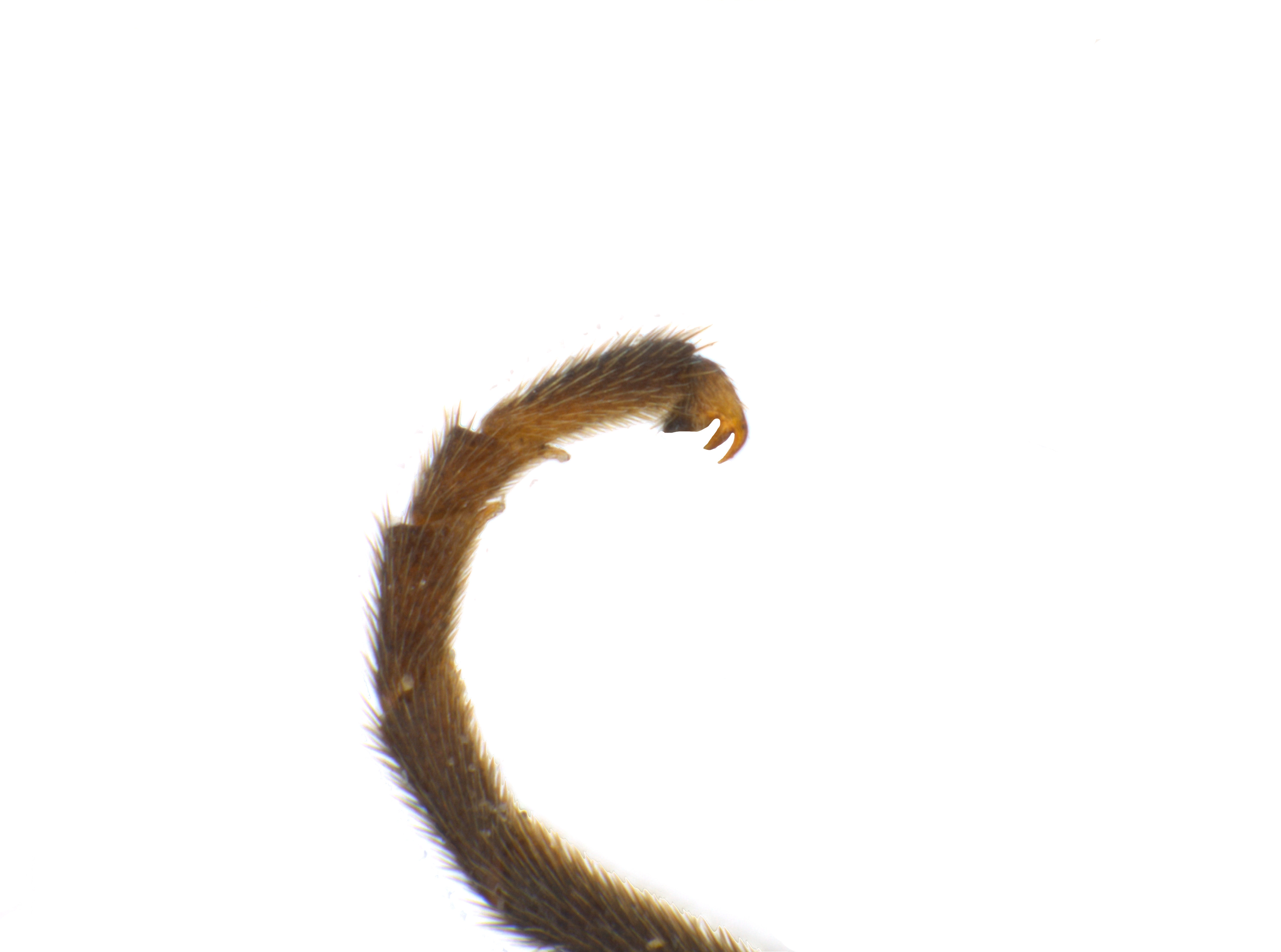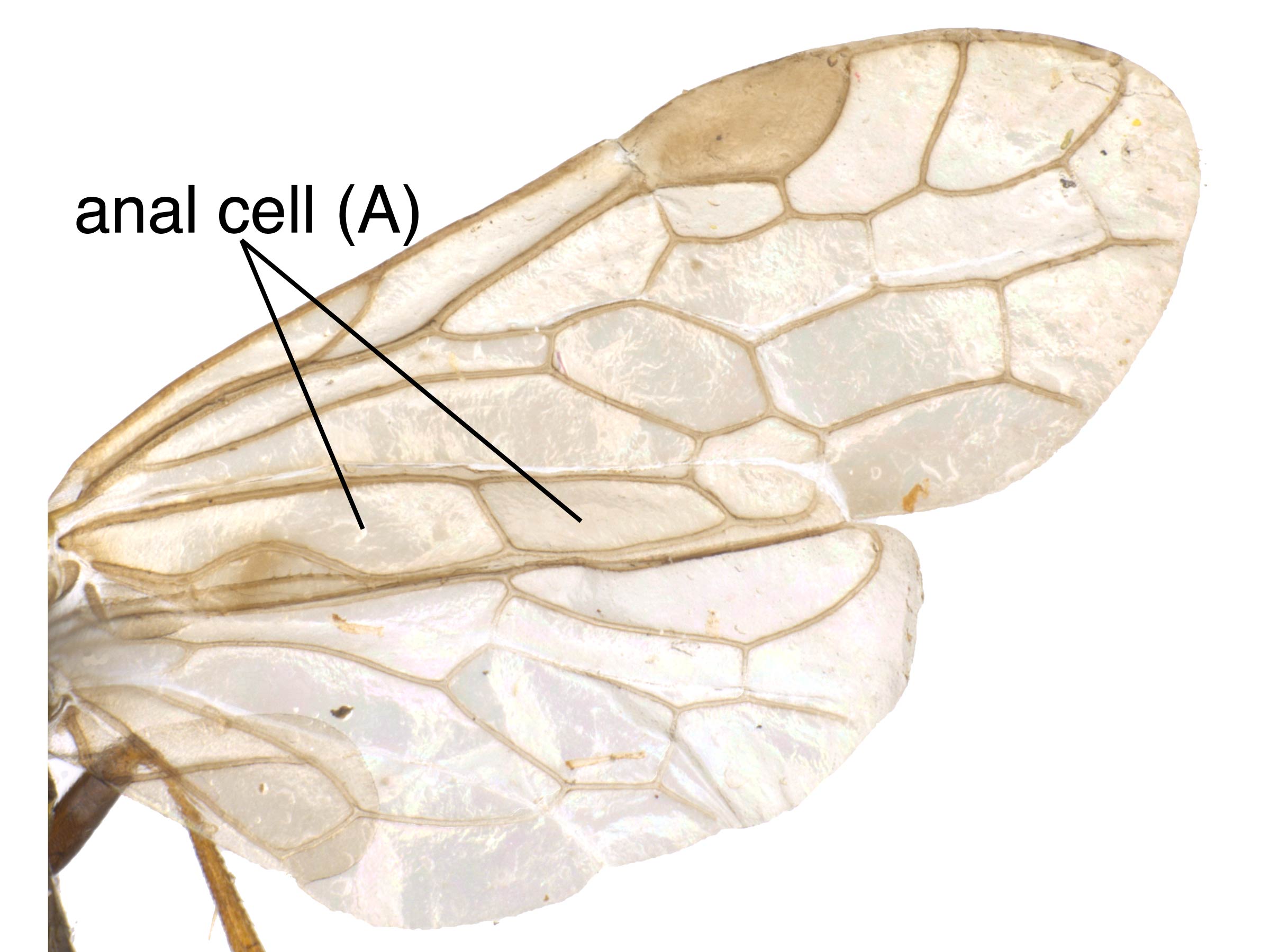Family: Tenthredinidae
Family common name: common sawflies
Subfamily: Blennocampinae
Tribe: Lycaotini
Genus: Lycaota Konow, 1903
Subgenera: none
The Tenthredinidae are the most species-rich family and are found throughout the world, in all continents but Antarctica. They are known as the “common sawflies.” They can generally be recognized by a cylindrical body and long, segmented antennaeantenna:
the sensory organ emerging from the front of the head, usually between the compound eyes and above the clypeus; includes the flagellum, scape and pedicel
 . Otherwise, they come in a variety of colors, sizes, and forms (Goulet 1992Goulet 1992:
. Otherwise, they come in a variety of colors, sizes, and forms (Goulet 1992Goulet 1992:
Goulet H. 1992. The genera and subgenera of the sawflies of Canada and Alaska: Hymenoptera. Symphyta. The insects and arachnids of Canada. Part 20. Agriculture Canada Publication.).
Sawflies in the subfamily Blennocampinae have a diverse set of life histories and habits. Many species are restricted to subtropical and tropical regions, but the genus is still fairly species-rich in North America. Blennocampinae includes many sawflies that feed on ornamental and forestry crops. This subfamily can be recognized by wing venationvenation:
the network of veins on a wing
and bidentatebidentate:
having two teeth; often used in descrbing mandibles or tarsal claws
 mandibles (Smith 1969dSmith 1969d:
mandibles (Smith 1969dSmith 1969d:
Smith DR. 1969d. Nearctic Sawflies. I. Blennocampinae: Adults and larvae (Hymenoptera: Tenthredinidae). Technical Bulletin, U.S. Department of Agriculture 1397: 1-176.).
Lycaota are about 6.5–7 mm in length and mostly black with dark legs. Though habits of Lycaota are not known, it’s possible that they are gall-inducers like closely-related genera Blennogeneris and European Hoplocampoides (Smith 1969dSmith 1969d:
Smith DR. 1969d. Nearctic Sawflies. I. Blennocampinae: Adults and larvae (Hymenoptera: Tenthredinidae). Technical Bulletin, U.S. Department of Agriculture 1397: 1-176.).
There are three described extantextant:
in existence; opposite of extinct
species worldwide, and all are restricted to North America (Taeger et al. 2010Taeger et al. 2010:
Taeger A, Blank SM, and Liston AD. 2010. World Catalog of Symphyta (Hymenoptera). Zootaxa 2580: 1-1064.).
Subfamily characters
 veins Cu1 and 1m-cu between 120°–150° (Goulet 1992Goulet 1992:
veins Cu1 and 1m-cu between 120°–150° (Goulet 1992Goulet 1992: veins M and 1m-cu parallel (Smith 1969dSmith 1969d:
veins M and 1m-cu parallel (Smith 1969dSmith 1969d:Genus characters
 veins 2A and 3A complete, forming an anal cellanal cell:
veins 2A and 3A complete, forming an anal cellanal cell: (Goulet 1992Goulet 1992:
(Goulet 1992Goulet 1992: anal cellanal cell:
anal cellanal cell: slightly constricted basally (Goulet 1992Goulet 1992:
slightly constricted basally (Goulet 1992Goulet 1992: anal cellanal cell:
anal cellanal cell: crossvein very short and perpendicular (Goulet 1992Goulet 1992:
crossvein very short and perpendicular (Goulet 1992Goulet 1992: cellcell:
cellcell: M present (Smith 1969dSmith 1969d:
M present (Smith 1969dSmith 1969d: seemingly simple, with an extremely small inner tooth (Smith 1969dSmith 1969d:
seemingly simple, with an extremely small inner tooth (Smith 1969dSmith 1969d:Lycaota can be confused with similar species in the subfamily Blennocampinae. It can be distinguished from most other genera by the complete fore wingfore wing:
the anterior wing of each pair of wings; usually the largest wing of the pair
 anal cellanal cell:
anal cellanal cell:
cell A of either the fore wing or hind wing
 and from similar genus Blennogeneris by usually darkened wings and black-colored legs (Goulet 1992Goulet 1992:
and from similar genus Blennogeneris by usually darkened wings and black-colored legs (Goulet 1992Goulet 1992:
Goulet H. 1992. The genera and subgenera of the sawflies of Canada and Alaska: Hymenoptera. Symphyta. The insects and arachnids of Canada. Part 20. Agriculture Canada Publication.).
none
unknown
unknown
World: This genus is known only from North America (Taeger et al. 2010Taeger et al. 2010:
Taeger A, Blank SM, and Liston AD. 2010. World Catalog of Symphyta (Hymenoptera). Zootaxa 2580: 1-1064.).
North America: Lycaota is a western genus that occurs in California, Idaho, Colorado, Utah, Oregon, Washington, British Columbia, Alberta, and Saskatchewan (Smith 1969dSmith 1969d:
Smith DR. 1969d. Nearctic Sawflies. I. Blennocampinae: Adults and larvae (Hymenoptera: Tenthredinidae). Technical Bulletin, U.S. Department of Agriculture 1397: 1-176.).
Map data from: GBIF.org (29 October 2019) GBIF Occurrence Download Lycaota
Details about data used for maps can be found here.